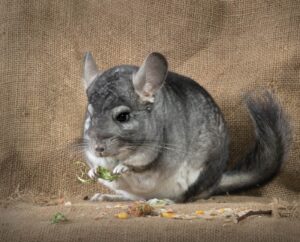Table of Contents
ToggleIntroduction
Hermit crabs can pinch and are more likely to do so when they feel threatened, hungry, or terrified. They will try to grab onto things with their pincers, especially if they pick them up from above and feel nervous about their grip. Do Hermit Crabs Pinch? It is possible to reduce the risk of being pinched by a hermit crab by holding it gently on the flat surface of an outstretched palm.
The pinches delivered by a hermit crab can range from hardly perceptible to excruciatingly painful, depending on the size of the pincers. First, we will go over how to prevent this from happening, and then we will go over what to do if you get your skin caught in the vice-like claw of a hermit crab.
Do Hermit Crabs Pinch?
Hermit crabs pinch, just like all other crabs. They don’t have fingers or hands, so their strong front claws are how they protect themselves from danger and find healthy food. The hermit crab is a decapod, which is a type of shellfish. These things have ten legs, and the two front legs often have big pinchers.
Unless it feels threatened, there is no reason for a hermit crab to pinch you. If you want to touch your pet, move slowly and ensure it sees you coming so it doesn’t get scared when you pick it up.
Hermit crabs can pinch, and a child could drop the crab out of fear. So they should always be watched when touching. The child and the crab could both get hurt in this situation. Take your hermit crab by the back of its shell and pick it up slowly. Hold it tightly so you don’t drop it by chance if it starts to move.
An important reason a hermit crab will hold on to something is because it doesn’t feel safe. They fear falling because it could be fatal, so they hold on to anything nearby for safety, which could be your hand. For the crab to feel safer, please keep your hands close to the ground and contact it at a level where it feels safe. It will help it stay calm. If it bites you, quickly put your hand on the ground. It will probably let go and try to move away.
The Mechanics Of Hermit Crab Pinching
Once we better understand how hermit crabs pinch, we will be better able to appreciate their behavior’s interesting and intricate nature. Pinch force is applied by hermit crabs using their larger cheliped, which is the one that is located closer to the front of their bodies. The following sequence of events makes up the mechanics of their squeeze:
Grasping: When a hermit crab senses that it is in danger, it will stretch its larger cheliped toward the direction of the imagined danger. This behavior is known as grasping. The pincer of the cheliped, also known as the chela, spreads wide as it gets ready to seize its prey.
Pinch: The hermit crab closes the chela with incredible speed and accuracy, effectively pinching the victim. Hermit crabs of different sizes and species can administer pinches of varying intensities, with certain hermit crabs able to inflict powerful pinches.
Retreat: After successfully pinching the threat or target, the hermit crab will frequently retreat rapidly, either crawling back into its shell or moving to a less dangerous position.
Why Do Hermit Crabs Pinch?
Hermit crabs pinch for several reasons, and understanding these motivations is essential to appreciate their behavior. Here are the primary reasons why hermit crabs pinch:
Self-Defense: The most common reason hermit crabs pinch is to defend themselves from perceived threats. Hermit crabs have a soft, vulnerable abdomen, which they protect by occupying empty shells. Feeling threatened, they may extend their larger cheliped (front pincer) to pinch and deter potential predators or disturbances. The pinch is a last resort for self-preservation.
Territorial Disputes: Hermit crabs are not naturally aggressive but can be territorial. They may negotiate with other hermit crabs over resources like shells, food, or territory. Pinching can be part of these confrontations as they establish dominance and secure their claim to a resource.
Stress Response: Hermit crabs can be sensitive to environmental changes or human handling. When they experience stress, they may respond by pinching to protect themselves. Stress can result from sudden movements, loud noises, or changes in their surroundings.
Communication: Sometimes, hermit crabs use pinching to communicate with other hermit crabs. This behavior can signal their presence or express their intentions during encounters. While not fully understood, pinching may play a role in social interactions among these creatures.
When Is The Best Time To Handle Hermit Crabs?
It is important to wait at least a few weeks after purchasing a new hermit crab before beginning to handle it. It will give the hermit crab time to settle in and become accustomed to its new surroundings. Move carefully as you approach the tank so the animal can adapt to your presence.
They will likely become startled if you move quickly around their tank, so avoid doing so. Hermit crabs have compound eyes, which allow them to detect motion quickly; thus, if there is any sudden activity in their environment, they may likely retreat into their shells to protect themselves.
At particular periods of the day, you will find that your hermit crabs are more active than at other times. These minuscule scavengers are typically active at night, and anyone close to the water knows that they may frequently be observed scouring the beach in the late afternoon or early evening.
Learn the schedule of your hermit crabs and try to interact with them. At the same time, they are in the most active part of their cycle. You will have a better chance of teaching them to take food from you this way, and they will have a greater interest in walking over your hands.
Do not try to shock or irritate your hermit crab into coming out of its shell. And engaging with you if it is tightly pulled back into its shell. It could cause it to become injured. These small animals are susceptible to stress and have a short life expectancy.
Conclusion
With their remarkable adaptations and unique behaviors, Hermit crabs have captured the fascination of nature enthusiasts and scientists alike. While not intended to harm, their pinching behavior is a vital defense mechanism to protect their vulnerable abdomens. Understanding why hermit crabs pinch and how to interact with them safely allows us to admire these captivating creatures while ensuring their well-being in natural and captive settings.







